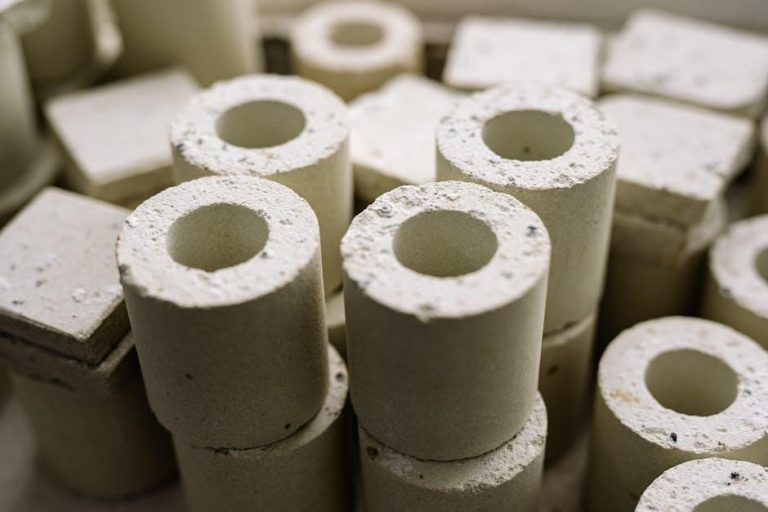
CATIA Composite Design enables the creation of complex composite structures‚ streamlining the design-to-manufacturing process․ It offers tools for modeling‚ analyzing‚ and documenting composite materials‚ enhancing efficiency in aerospace‚ automotive‚ and marine industries․
1․1 Overview of CATIA and Its Role in Composite Design
CATIA (Computer Aided Three-dimensional Interactive Application) is a powerful CAD/CAM/CAE software widely used in industries like aerospace‚ automotive‚ and marine․ Its composite design modules enable the creation of complex composite structures‚ from design to manufacturing․ CATIA streamlines workflows by integrating design‚ analysis‚ and simulation tools‚ ensuring precise material modeling and structural integrity․ It supports the entire composite design process‚ including ply definition‚ stack management‚ and interference checking․ CATIA’s role is crucial in optimizing composite layups‚ reducing material waste‚ and improving product performance․ Its compatibility with finite element analysis (FEA) enhances structural simulations‚ making it a cornerstone in modern composite engineering workflows․
1․2 Importance of Composite Materials in Modern Engineering
Composite materials are revolutionizing modern engineering due to their exceptional strength-to-weight ratio‚ corrosion resistance‚ and design flexibility․ They are widely used in aerospace‚ automotive‚ and marine industries to reduce weight while maintaining structural integrity; Composites enable the creation of complex shapes‚ improving aerodynamics and fuel efficiency․ Their durability and resistance to fatigue make them ideal for demanding applications․ The use of composites minimizes material waste and enhances performance‚ driving innovation in sustainable and high-performance products․ As industries strive for lightweight and durable solutions‚ composite materials play a pivotal role in advancing engineering capabilities and meeting modern technological challenges․
Key Features of CATIA for Composite Design

CATIA offers advanced tools like Composite Part Design (CPD) and Composite Engineering (CPE) modules‚ enabling precise laminate design‚ FEA integration‚ and comprehensive design documentation․
2․1 Composite Part Design (CPD) Module
The Composite Part Design (CPD) module in CATIA facilitates the creation of composite parts by enabling the definition of plies‚ stacks‚ and core materials․ It allows engineers to design complex geometries and manage multiple layers within a single part․ The module integrates seamlessly with other CATIA workbenches‚ ensuring a smooth transition from design to analysis․ By automating repetitive tasks‚ CPD enhances productivity and accuracy‚ making it an essential tool for industries requiring precise composite structures․ Additionally‚ it supports the generation of detailed design documentation‚ which is crucial for manufacturing and quality control processes․
2․2 Composite Engineering (CPE) Workbench
The Composite Engineering (CPE) Workbench is a process-centric solution designed for advanced composite part design․ It provides tools for defining composite plies‚ stacking sequences‚ and core materials‚ ensuring compliance with industry standards․ The workbench supports detailed design documentation‚ including cut lists and manufacturing instructions․ Engineers can manage complex geometries and simulate ply drop-offs‚ improving design accuracy․ CPE also integrates with CATIA’s Finite Element Analysis (FEA) tools‚ enabling a seamless transition from design to analysis․ This integration ensures that composite structures meet performance and safety requirements‚ making the CPE Workbench a critical tool in aerospace‚ automotive‚ and marine industries․
2․4 Integration with Finite Element Analysis (FEA)
CATIA’s integration with Finite Element Analysis (FEA) tools enhances the design and validation of composite structures․ Engineers can simulate composite behavior under various loads‚ including compression‚ shear‚ and post-buckling scenarios․ This integration ensures accurate prediction of composite performance‚ enabling optimization of material usage and structural integrity․ FEA tools within CATIA facilitate detailed stress and strain analysis‚ helping identify potential failures early in the design process; This seamless workflow between design and analysis streamlines composite product development‚ making it a powerful solution for industries like aerospace‚ automotive‚ and marine‚ where lightweight and durable composite materials are critical․

The Composite Design Process in CATIA
The process involves creating detailed composite models‚ defining plies and stacks‚ and checking for intersections to ensure accurate and manufacturable designs‚ streamlining composite development․
3․1 Creating the Composite Model
Creating a composite model in CATIA involves defining the structure‚ geometry‚ and material properties․ Users can layer plies and stacks to form complex shapes‚ ensuring precise alignment and material distribution․ The software allows for the creation of detailed models‚ including core materials and sandwich structures․ Designers can also define fiber orientations and thicknesses‚ crucial for performance․ Additionally‚ tools for checking intersections and collisions help maintain model accuracy․ The process integrates with FEA for structural analysis‚ ensuring the model meets engineering requirements․ This step is foundational for downstream manufacturing‚ enabling the generation of precise technical documentation for production․ It ensures designs are both functional and manufacturable‚ streamlining the development cycle․
3․2 Defining Plies and Stacks
Defining plies and stacks is a critical step in CATIA Composite Design‚ enabling precise control over material distribution and structural integrity․ Plies are individual layers of composite material‚ while stacks refer to the assembly of these plies into a cohesive structure․ Designers can specify ply orientation‚ thickness‚ and material type‚ ensuring optimal performance under stress․ CATIA provides tools to define stack sequences‚ manage core materials‚ and create sandwich structures․ This process ensures accurate material usage and minimizes weight while maintaining strength․ The software also allows for the import of predefined ply templates‚ streamlining the design workflow․ Properly defined plies and stacks are essential for accurate FEA analysis and manufacturing documentation‚ ensuring the final product meets engineering specifications and performance requirements․ This step is vital for achieving the desired mechanical properties in composite components‚ making it a cornerstone of the design process․ By carefully configuring plies and stacks‚ engineers can optimize composite structures for real-world applications‚ ensuring reliability and efficiency across industries such as aerospace and automotive․ The ability to tweak and refine these elements within CATIA ensures that designs are both innovative and practical‚ aligning with modern engineering demands for lightweight yet durable materials․ Integrating this process with other CATIA modules further enhances the overall design efficiency‚ allowing for seamless transitions between modeling‚ analysis‚ and manufacturing phases․ This meticulous approach to ply and stack definition underscores CATIA’s role as a comprehensive tool for advanced composite design‚ empowering engineers to push the boundaries of material science and structural engineering․ The software’s intuitive interface and robust features make it an indispensable asset for professionals aiming to create high-performance composite components that meet the stringent requirements of today’s competitive markets․ By leveraging CATIA’s capabilities‚ designers can ensure that every ply and stack contributes to the overall integrity and functionality of the final product‚ whether it’s an aircraft panel‚ a vehicle chassis‚ or any other composite structure requiring precision and strength․ The detailed control offered by CATIA during this phase not only enhances the quality of the design but also reduces the risk of material failures‚ ensuring that the composite components perform as expected in real-world conditions․ This level of precision and customization is a hallmark of CATIA’s Composite Design module‚ making it a preferred choice for industries where composite materials play a pivotal role in innovation and advancement․ The ability to define plies and stacks with such granularity ensures that every aspect of the composite structure is optimized for its intended application‚ whether it’s weight reduction‚ improved durability‚ or enhanced thermal resistance․ By mastering this process‚ engineers can fully exploit the potential of composite materials‚ driving innovation and excellence in their respective fields․ The integration of this feature within CATIA’s broader suite of tools ensures that the design process remains cohesive and efficient‚ allowing for faster iteration and refinement․ This‚ in turn‚ accelerates the development cycle‚ enabling companies to bring cutting-edge composite products to market more quickly and effectively․ The importance of properly defining plies and stacks cannot be overstated‚ as it directly impacts the structural integrity‚ weight‚ and overall performance of the composite component․ CATIA’s advanced tools and features make this process both manageable and precise‚ even for complex geometries and multi-layered structures․ The software’s ability to handle intricate details ensures that designers can achieve the desired material properties without compromising on design complexity․ This balance between precision and flexibility is what makes CATIA an indispensable tool for modern composite design‚ enabling engineers to create innovative solutions that meet the challenges of the 21st century․ The continuous refinement of ply and stack definitions within CATIA ensures that composite components are not only structurally sound but also aligned with the latest advancements in material science and engineering practices․ By utilizing CATIA’s capabilities‚ designers can stay at the forefront of composite design‚ delivering products that are both innovative and reliable․ The software’s comprehensive approach to ply and stack definition is a testament to its versatility and power‚ making it an essential resource for any professional involved in composite design and manufacturing․ The ability to define plies and stacks with such precision and control is a key factor in the success of composite projects‚ ensuring that every layer contributes to the overall performance and durability of the final product․ This meticulous attention to detail is what sets CATIA apart as a leading solution for composite design‚ empowering engineers to create structures that are as strong as they are lightweight․ The software’s intuitive interface and advanced features make it easier than ever to define plies and stacks‚ even for those new to composite design․ This accessibility‚ combined with its powerful capabilities‚ ensures that CATIA remains a preferred choice for industries ranging from aerospace to automotive and beyond․ The process of defining plies and stacks in CATIA is not only about creating a structural model but also about laying the foundation for successful analysis‚ simulation‚ and manufacturing․ By getting this step right‚ engineers can ensure that their composite components perform as intended‚ whether in the lab or in real-world applications․ The software’s robust tools and features provide the necessary support to achieve this goal‚ making CATIA an invaluable asset for anyone working with composite materials․ The ability to define plies and stacks with such precision is a cornerstone of CATIA’s Composite Design module‚ enabling engineers to unlock the full potential of composite materials․ By leveraging this capability‚ professionals can create innovative‚ high-performance components that meet the demands of modern engineering․ The software’s continuous evolution ensures that it remains at the cutting edge of composite design‚ offering features that address the latest challenges and opportunities in the field․ As a result‚ CATIA continues to be the go-to solution for industries where composite materials are key to advancing technology and achieving operational excellence․ The process of defining plies and stacks in CATIA is a perfect example of how software can empower engineers to create better‚ more efficient designs․ By providing the tools needed to precisely control material distribution and structure‚ CATIA helps bridge the gap between conceptual design and practical implementation․ This capability is essential for industries where every layer and every detail matters‚ ensuring that composite components are both reliable and high-performing․ The software’s emphasis on precision and control during this phase ensures that designs are not only innovative but also manufacturable‚ reducing the risk of errors and rework․ This focus on practicality and performance makes CATIA a trusted partner for composite design‚ enabling engineers to bring their visions to life with confidence and accuracy․ The ability to define plies and stacks with such granularity is a testament to CATIA’s commitment to excellence in composite design‚ providing engineers with the tools they need to succeed in an ever-evolving field․ By continuously refining and improving this process‚ CATIA ensures that its users remain at the forefront of composite material innovation‚ capable of addressing the most complex challenges with effective solutions․ The software’s dedication to precision and usability makes it an indispensable resource for anyone involved in composite design‚ from initial concept to final production․ The process of defining plies and stacks in CATIA is a critical step in the creation of high-performance composite components‚ and the software’s robust tools make it easier than ever to achieve exceptional results․ This level of control and precision is what makes CATIA a leading solution for industries where composite materials are essential‚ ensuring that every design meets the highest standards of quality and performance․ The software’s ability to handle complex geometries and multi-layered structures with ease is a major advantage‚ allowing engineers to focus on innovation rather than being hindered by design limitations․ By leveraging CATIA’s advanced features‚ professionals can create composite components that are not only structurally sound but also aligned with the latest advancements in material science and engineering․ The continuous support for ply and stack definition in CATIA ensures that engineers can always achieve the desired material properties‚ regardless of the complexity of the design․ This level of flexibility and control is unparalleled‚ making CATIA the preferred choice for composite design across various industries․ The software’s intuitive interface and powerful features work together to streamline the design process‚ allowing engineers to define plies and stacks with confidence and precision․ This focus on usability and performance ensures that CATIA remains a vital tool for composite design‚ enabling professionals to create innovative solutions that meet the demands of modern engineering․ The ability to define plies and stacks with such accuracy is a key factor in the success of composite projects‚ and CATIA’s advanced tools make this process both efficient and effective․ By providing engineers with the means to precisely control material distribution and structure‚ CATIA empowers them to create high-performance composite components that excel in real-world applications․ The software’s commitment to excellence in this area is evident‚ ensuring that every design is both innovative and reliable․ The process of defining plies and stacks in CATIA is a perfect example of how software can enhance the design process‚
3․3 Checking for Intersections and Collisions
CATIA provides advanced tools to detect and manage intersections and collisions in composite designs․ This step ensures structural integrity by identifying overlapping plies or conflicting geometries․ Designers can use visualization tools to inspect composite models and resolve conflicts early in the design process․ Collision detection helps prevent manufacturing issues‚ such as delamination or improper fits․ CATIA’s algorithms analyze layer interactions‚ ensuring accurate ply placement and minimizing material waste․ This process is critical for maintaining design accuracy and manufacturability‚ especially in complex geometries․ By addressing collisions upfront‚ engineers can optimize composite structures for strength‚ durability‚ and weight efficiency‚ ensuring reliable performance in real-world applications․

Material Selection and Properties
Material selection is critical in composite design‚ ensuring optimal strength‚ weight‚ and durability․ CATIA allows precise configuration of material properties‚ enabling accurate analysis and performance prediction․
4․1 Understanding Composite Material Behavior
Composite materials exhibit unique behaviors due to their anisotropic properties‚ meaning their strength and stiffness vary with direction․ This is crucial for designing efficient structures‚ as composites can be optimized for specific load paths․ Understanding factors like stress distribution‚ failure modes‚ and environmental effects is essential for predicting performance․ In CATIA‚ engineers can simulate these behaviors using FEA tools‚ ensuring designs meet safety and durability standards․ Accurate material modeling helps prevent failures and optimizes weight reduction‚ making composites ideal for aerospace and automotive applications where performance and efficiency are critical․ This understanding is foundational for successful composite design and analysis․
4․2 Configuring Material Properties in CATIA
Configuring material properties in CATIA is essential for accurate composite design․ Engineers define mechanical properties such as elastic modulus‚ Poisson’s ratio‚ and shear stiffness․ These properties are inputted for each ply‚ enabling precise simulation of composite behavior under various loads․ CATIA allows the creation of material models that account for anisotropy‚ ensuring realistic stress and strain analysis․ Users can also define failure criteria‚ such as maximum strain or Tsai-Wu indices‚ to predict material limits․ Additionally‚ the software supports the configuration of layers and ply orientations‚ enabling the optimization of composite stacks for specific applications․ This ensures designs are both durable and lightweight‚ meeting performance requirements․
Manufacturing Considerations
CATIA ensures manufacturability by analyzing production feasibility early in design․ Tools validate drapability‚ flat patterns‚ and material utilization‚ optimizing composite part production for reduced errors and waste․
5․1 Design for Manufacturability (DFM)
Design for Manufacturability (DFM) in CATIA ensures composite designs are production-ready․ Tools like layup optimization and defect detection enable early identification of manufacturing challenges‚ reducing production delays․ Automated checks validate material limits‚ fiber orientation‚ and ply stacking‚ ensuring compliance with production standards․ This approach minimizes rework‚ enhances part quality‚ and streamlines workflows․ By integrating DFM principles‚ engineers can create composite structures that are both cost-effective and manufacturable‚ addressing potential issues before the production phase begins․
5․2 Generating Manufacturing Documentation
CATIA streamlines the creation of detailed manufacturing documentation‚ ensuring clear communication between design and production teams․ The software generates precise ply books‚ cut plans‚ and production-ready drawings‚ incorporating material specifications and manufacturing instructions․ Automated documentation reduces errors and accelerates the production process․ Customizable templates and export options further enhance efficiency‚ catering to specific manufacturing requirements․ This capability ensures that composite designs are accurately translated into physical products‚ maintaining design intent and quality standards throughout the manufacturing lifecycle․ Efficient documentation is crucial for meeting project deadlines and delivering high-performance composite components․
Analysis and Simulation
CATIA offers advanced analysis tools to simulate composite behavior under various loads‚ ensuring optimal performance and safety․ Simulation helps identify potential failures‚ reducing costly physical testing․
6․1 Using FEA for Composite Structures
CATIA integrates Finite Element Analysis (FEA) to simulate composite structures’ behavior under various loads․ FEA helps analyze stress‚ strain‚ and failure points‚ ensuring structural integrity․ By modeling composite materials’ unique properties‚ FEA optimizes designs for weight reduction and performance enhancement․ Engineers can predict how composites respond to compression‚ tension‚ and shear‚ enabling informed design decisions․ FEA also supports post-buckling analysis‚ critical for aerospace and automotive applications․ This integration streamlines the design-to-analysis workflow‚ reducing reliance on physical prototypes and accelerating product development․ FEA in CATIA is essential for validating composite designs‚ ensuring they meet safety and performance standards before manufacturing begins․
6․2 Post-Buckling Analysis of Composite Panels
Post-buckling analysis in CATIA evaluates composite panels’ behavior after exceeding critical load thresholds‚ ensuring structural integrity under extreme conditions․ This analysis is crucial for aerospace and automotive applications‚ where composite panels must withstand compression and shear․ CATIA’s FEA tools simulate post-buckling behavior‚ identifying potential failure modes and optimizing designs for weight reduction․ Engineers can assess how composites deform post-buckling‚ enabling safer and more efficient designs․ This analysis also supports the development of load-bearing composite structures‚ ensuring compliance with industry standards․ By predicting post-buckling responses‚ CATIA helps mitigate risks and enhances the reliability of composite panels in real-world applications․
Best Practices in CATIA Composite Design
Adopting best practices in CATIA ensures efficient composite design‚ focusing on optimized layups‚ accurate material properties‚ and thorough documentation․ These practices minimize errors and enhance manufacturability․
7․1 Optimizing Composite Layups
Optimizing composite layups in CATIA involves strategically arranging plies to enhance structural performance while minimizing material waste․ Utilizing FEA integration‚ engineers can analyze stress points and predict failure modes‚ ensuring designs meet safety and durability standards․ Automating the design process with CATIA’s tools reduces errors and accelerates production․ By adhering to design for manufacturability (DFM) principles‚ composite parts are tailored for efficient assembly․ This approach is critical in aerospace and automotive industries‚ where lightweight‚ high-strength components are essential․ Best practices include iterative testing‚ material property optimization‚ and precise documentation to maintain quality and consistency across projects․
7․2 Managing Design Documentation
Effective management of design documentation ensures traceability‚ collaboration‚ and compliance throughout the composite design process․ CATIA provides tools to generate detailed reports‚ including material specifications‚ ply configurations‚ and manufacturing instructions․ Centralized storage of documentation reduces errors and enhances team coordination․ Version control features prevent data discrepancies‚ while automated updates maintain consistency․ This systematic approach is vital for meeting industry standards and regulatory requirements․ Proper documentation also facilitates knowledge transfer and supports long-term maintenance of composite structures․ By integrating documentation workflows within CATIA‚ engineers can streamline communication and ensure all stakeholders have access to accurate‚ up-to-date information‚ fostering a more efficient design environment․
Case Studies and Real-World Applications
CATIA enables real-world innovations in aerospace‚ automotive‚ and marine industries through composite design․ Case studies highlight successful applications in lightweight aircraft components and durable ship panels‚ showcasing enhanced performance․
8․1 Aerospace and Defense Applications
CATIA Composite Design is extensively used in aerospace and defense for creating lightweight‚ high-performance composite structures․ It aids in designing aircraft components‚ such as wings and fuselage panels‚ to reduce weight while maintaining strength․ The software also supports the development of satellite components and missile systems‚ ensuring precision and durability․ Its FEA integration allows engineers to simulate and optimize composite materials under various loads‚ enhancing reliability․ Real-world applications include the production of advanced composite parts for military aircraft and spacecraft‚ where material efficiency and structural integrity are critical․ CATIA’s capabilities have revolutionized aerospace engineering‚ enabling the creation of next-generation‚ high-performance composite systems․
8․2 Automotive and Marine Composite Design
CATIA Composite Design is widely applied in automotive and marine industries to develop lightweight‚ durable composite components․ In automotive‚ it aids in creating carbon fiber chassis and body panels‚ reducing vehicle weight while enhancing performance․ For marine applications‚ CATIA is used to design composite ship hulls‚ panels‚ and doors‚ improving corrosion resistance and structural integrity․ The software supports the creation of complex shapes and enables efficient material usage‚ minimizing production costs․ Its collision detection tools ensure accurate model validation․ These solutions contribute to fuel efficiency in vehicles and reduced maintenance in marine structures‚ making CATIA indispensable for modern automotive and marine composite design workflows․

Challenges in Composite Design
Challenges in composite design include material behavior unpredictability‚ interfacial bonding issues‚ and recycling complexities‚ requiring advanced simulation tools for accurate performance prediction and sustainable solutions․
9․1 Material Limitations and Failures
Composite materials face limitations such as delamination‚ fiber-matrix interfacial failures‚ and susceptibility to environmental factors like moisture and temperature․ These issues can lead to structural weaknesses and unexpected failures․ Designers must account for material anisotropy and ensure proper load distribution to prevent such defects․ Additionally‚ manufacturing defects like porosity or incorrect fiber orientation can compromise material integrity․ CATIA’s simulation tools help predict failure modes‚ enabling designers to optimize material selection and structural integrity․ Understanding these limitations is critical for achieving reliable and durable composite designs in aerospace‚ automotive‚ and marine applications․
9․2 Manufacturing Complexity

Manufacturing composites involves intricate processes like hand layup‚ automated fiber placement‚ and resin transfer molding‚ each requiring precise control․ The complexity arises from managing multiple materials‚ ensuring proper ply orientation‚ and maintaining tight tolerances․ Tooling design and curing cycles add layers of difficulty․ CATIA’s design-for-manufacturability tools help mitigate these challenges by enabling early detection of production issues․ However‚ the need for specialized equipment and skilled labor increases costs and production time․ These factors highlight the importance of optimizing designs and processes to achieve efficient‚ high-quality composite manufacturing while minimizing defects and reducing lead times in industries like aerospace and automotive․

Future Trends in CATIA Composite Design
Future trends include hybrid composite materials‚ automation‚ and AI integration‚ enhancing design efficiency and precision․ These advancements aim to optimize composite structures for sustainability and performance․

10․1 Hybrid Composite Materials
Hybrid composite materials combine different fiber and matrix systems to achieve superior properties․ CATIA supports the design and analysis of these materials‚ enabling engineers to optimize strength‚ weight‚ and cost․ By integrating hybrid composites‚ industries can develop lightweight‚ durable structures for aerospace‚ automotive‚ and industrial applications․ These materials address the limitations of traditional composites‚ offering enhanced performance under various loads․ CATIA’s advanced tools facilitate the simulation and testing of hybrid composites‚ ensuring their reliability and efficiency․ This trend is expected to revolutionize composite design‚ driving innovation and sustainability in manufacturing processes․
10․2 Automation and AI in Composite Design
Automation and AI are transforming composite design by streamlining workflows and enhancing precision․ CATIA leverages AI to optimize material selection‚ ply orientation‚ and stacking sequences‚ reducing design errors․ Automated tools generate complex composite geometries and simulate their behavior under various loads․ AI-driven algorithms predict material failures and suggest improvements‚ accelerating the design cycle․ These advancements enable engineers to create lightweight‚ high-performance composites efficiently․ By integrating AI‚ CATIA fosters innovation‚ reducing production costs and environmental impact․ This trend is expected to redefine composite design‚ making it faster‚ smarter‚ and more sustainable for industries like aerospace and automotive․

Training and Resources
CATIA offers comprehensive training programs‚ including a 5-day course on composite part design and manufacturing preparation using CATIA V5‚ ensuring engineers master advanced composite engineering techniques․
11․1 Available CATIA Composite Design Courses
A 5-day course is available‚ focusing on designing and preparing laminated composite parts for manufacturing using CATIA V5․ This program covers composite part design‚ material selection‚ and manufacturing preparation․ It includes hands-on exercises to master composite engineering techniques․ The course is designed for engineers‚ designers‚ and professionals involved in aerospace‚ automotive‚ and marine industries․ Participants learn to create composite models‚ define plies‚ and analyze structures․ Additional resources include online tutorials and documentation‚ ensuring comprehensive understanding of CATIA’s composite design capabilities․ This training enhances skills in optimizing composite layups and managing design documentation effectively․
11․2 Online Tutorials and Documentation

Extensive online tutorials and documentation are available for CATIA Composite Design‚ offering step-by-step guides for mastering composite modeling‚ material selection‚ and manufacturing processes․ These resources include detailed manuals‚ video tutorials‚ and case studies‚ providing practical insights into optimizing composite layups and analyzing structures․ Users can access archives of design documentation‚ research papers‚ and industry-specific applications‚ enhancing their understanding of composite design principles․ Additional materials cover advanced topics such as finite element analysis (FEA) integration and post-buckling analysis‚ ensuring a comprehensive learning experience․ These resources cater to both beginners and experienced professionals‚ fostering improved design accuracy and efficiency in composite product development․
